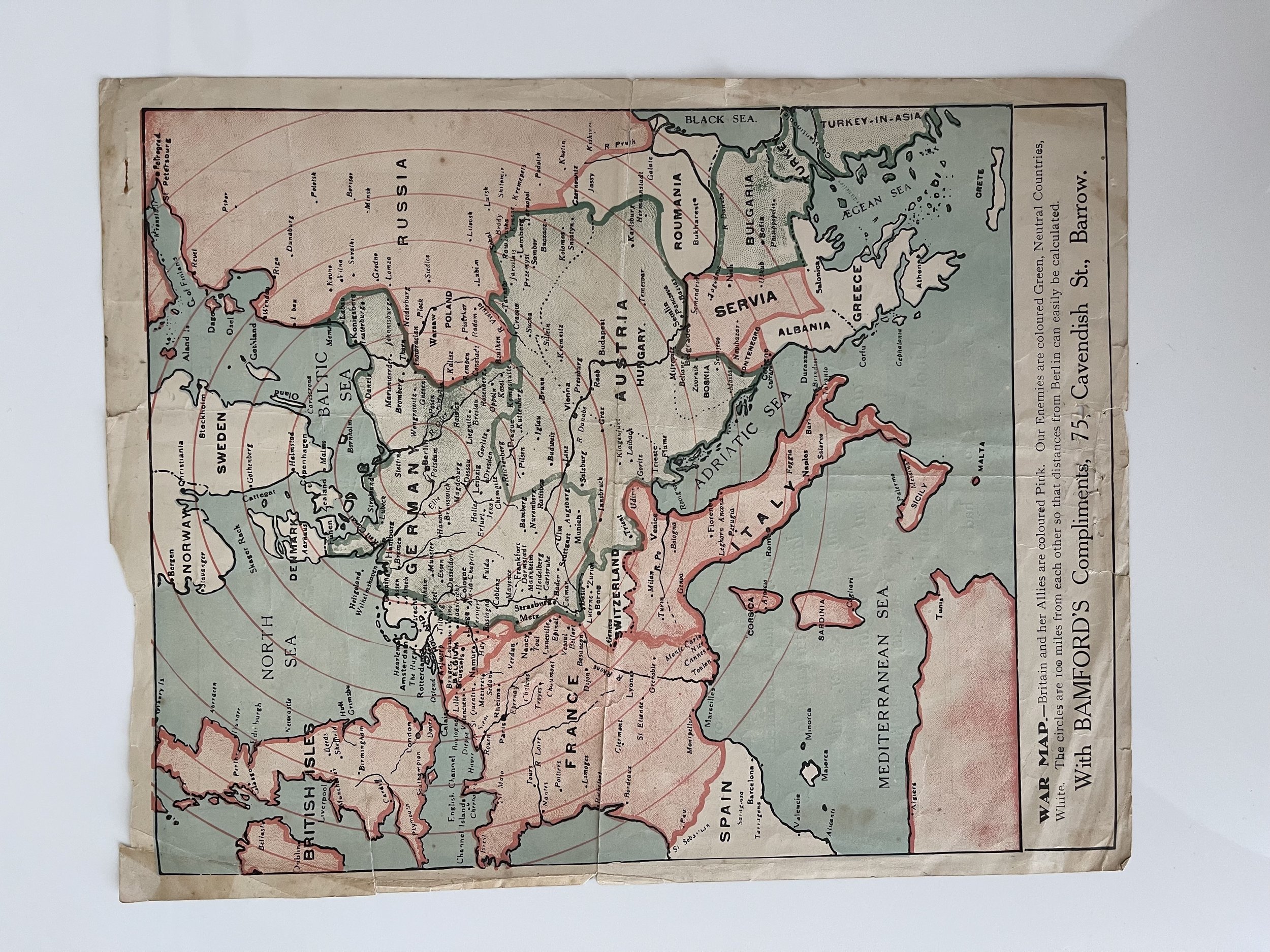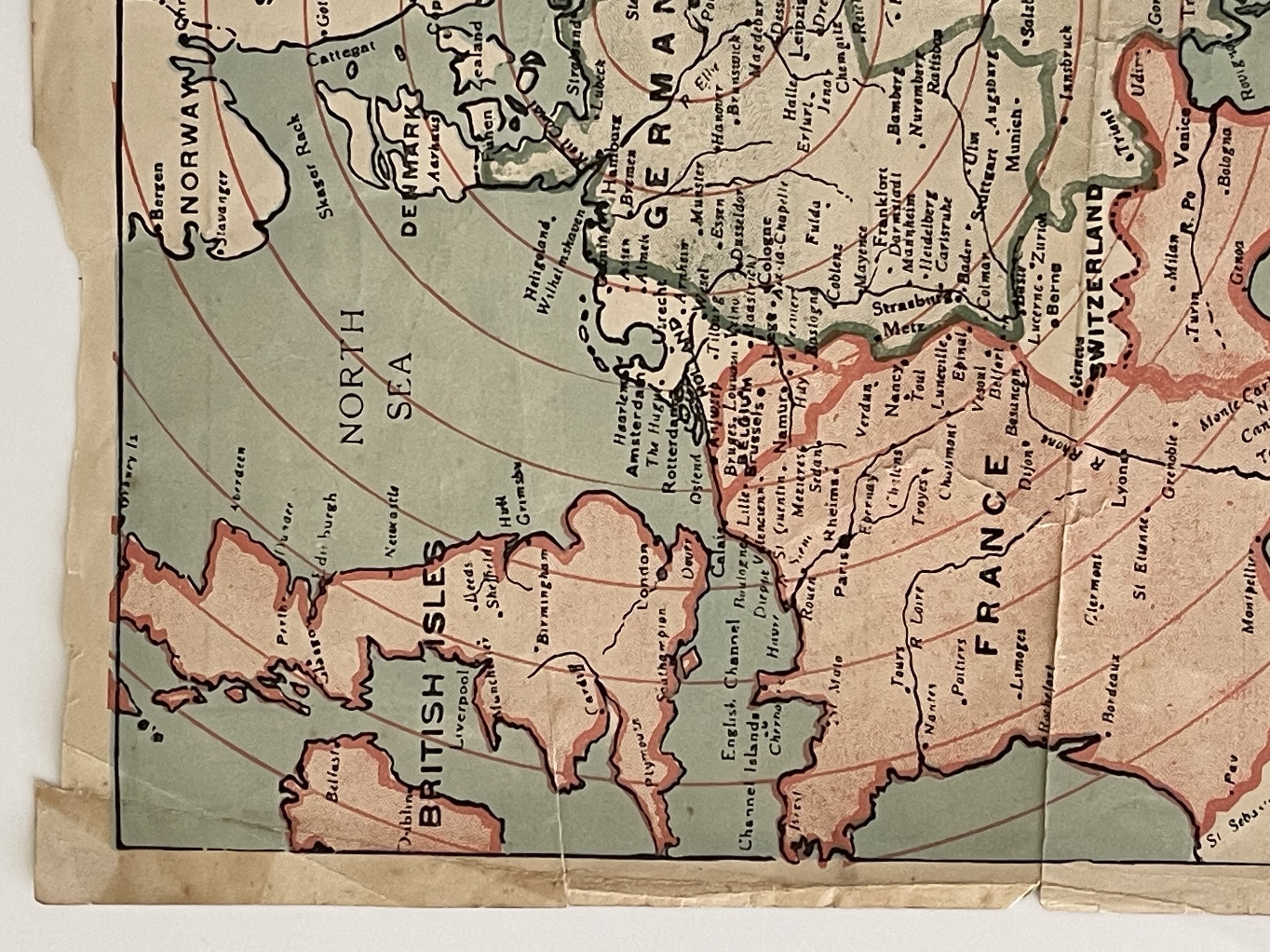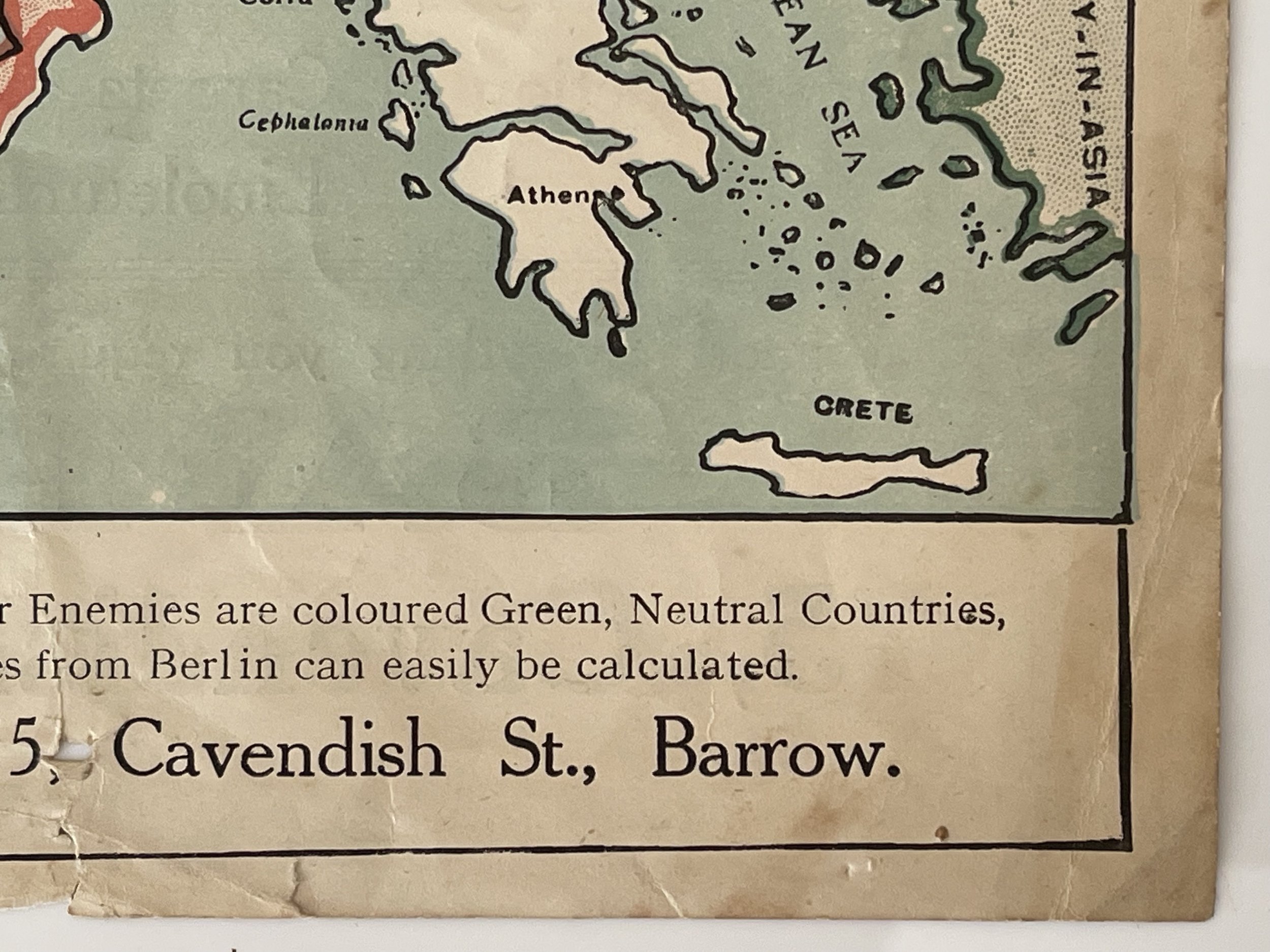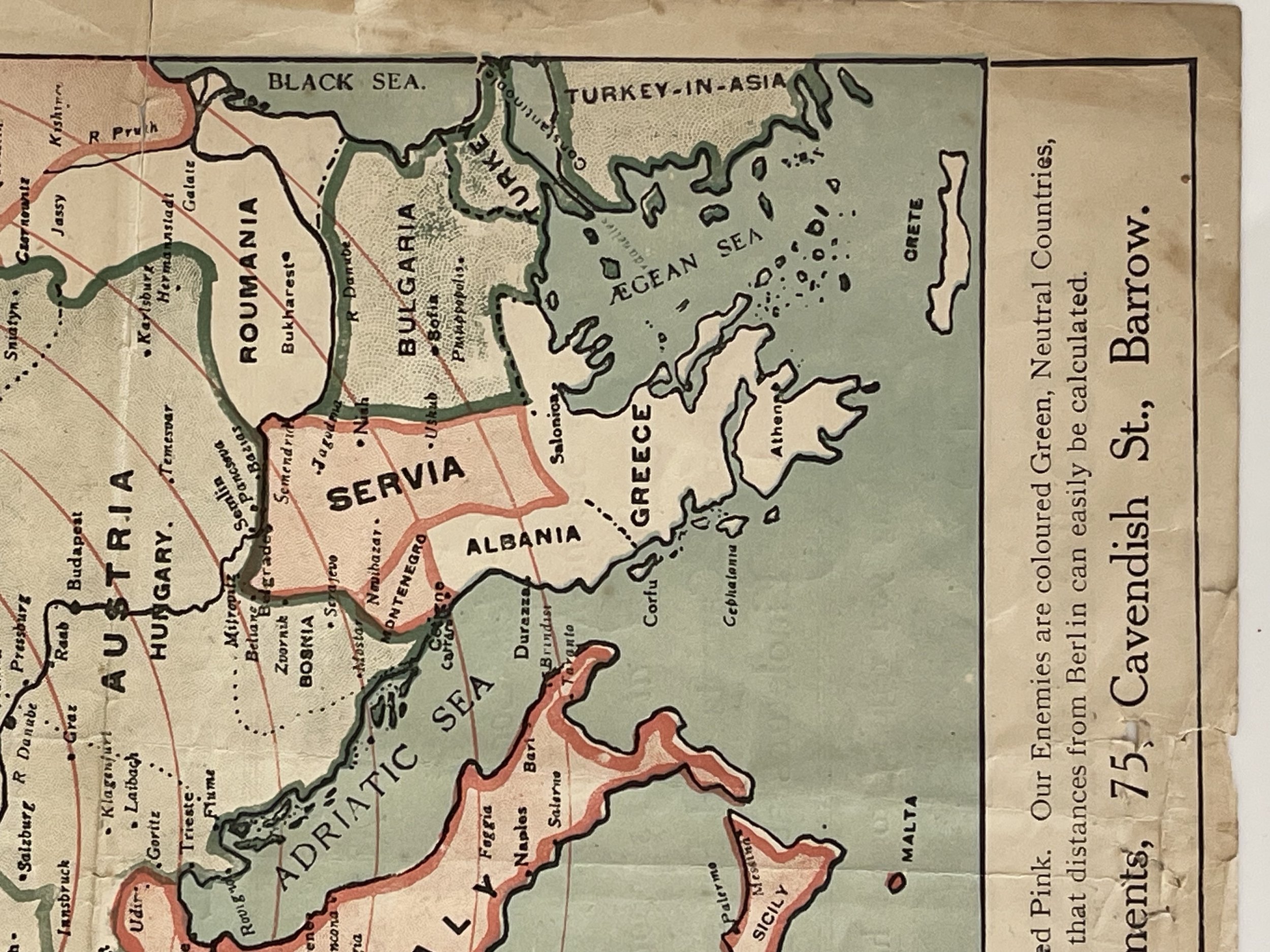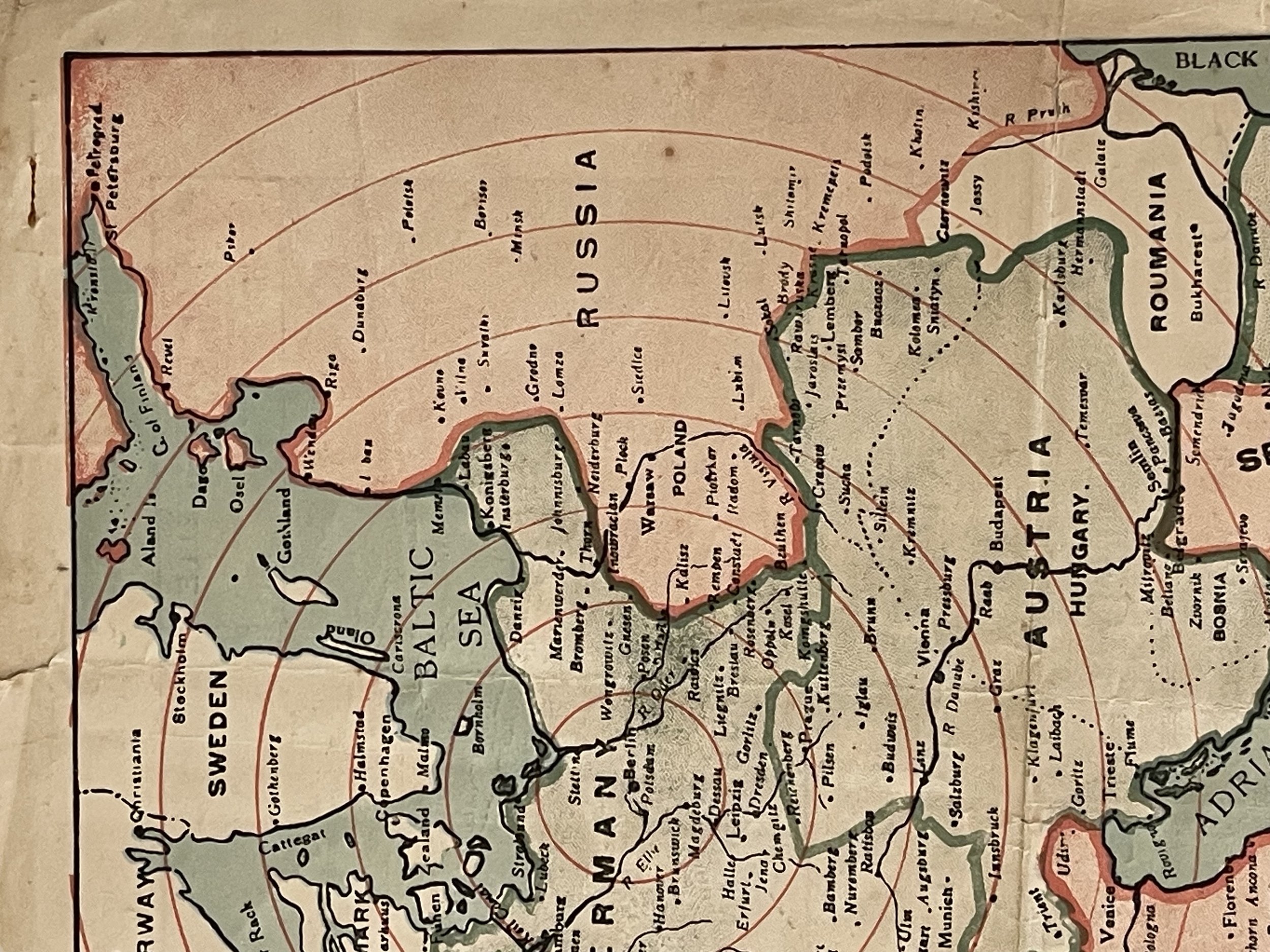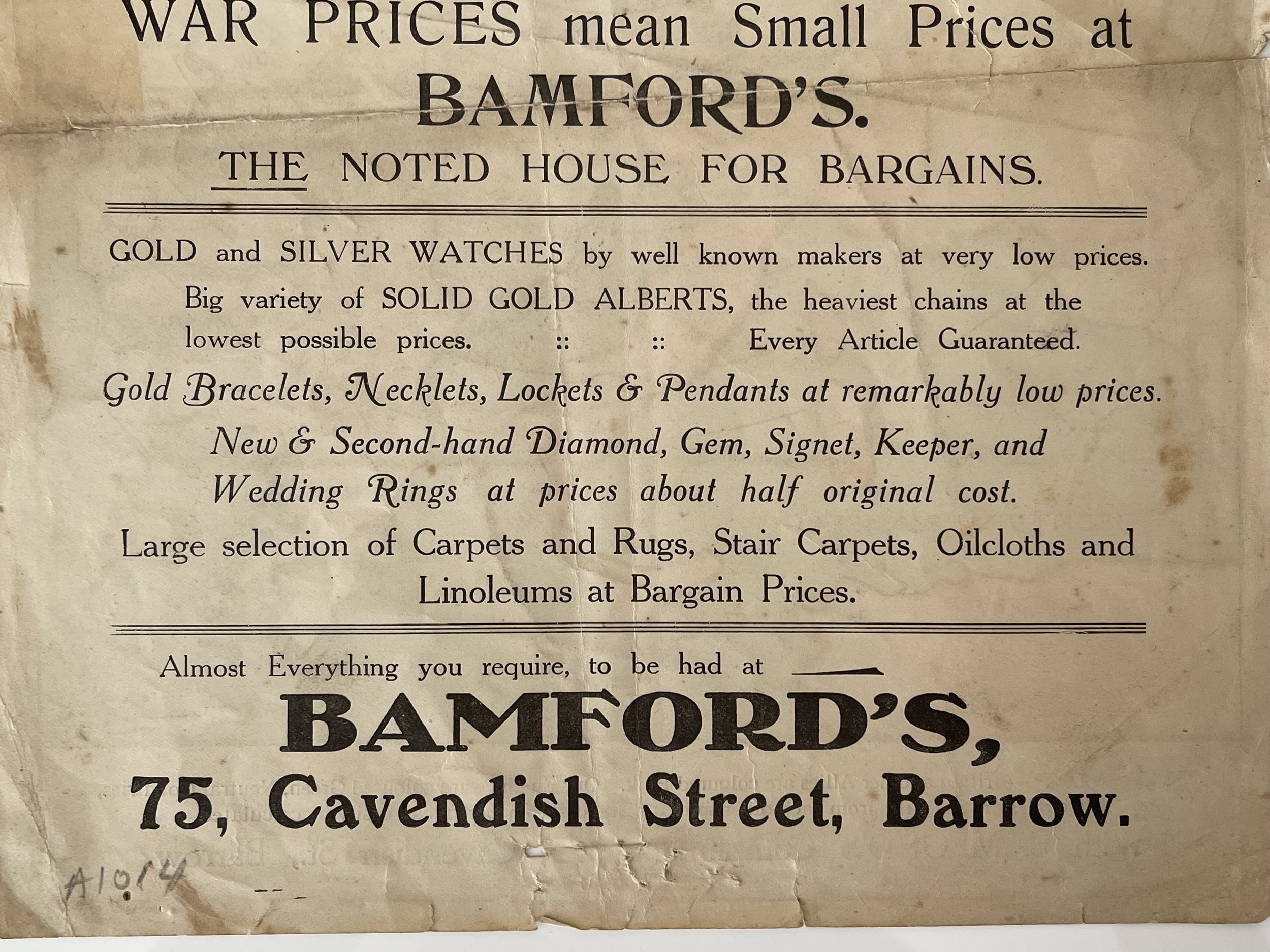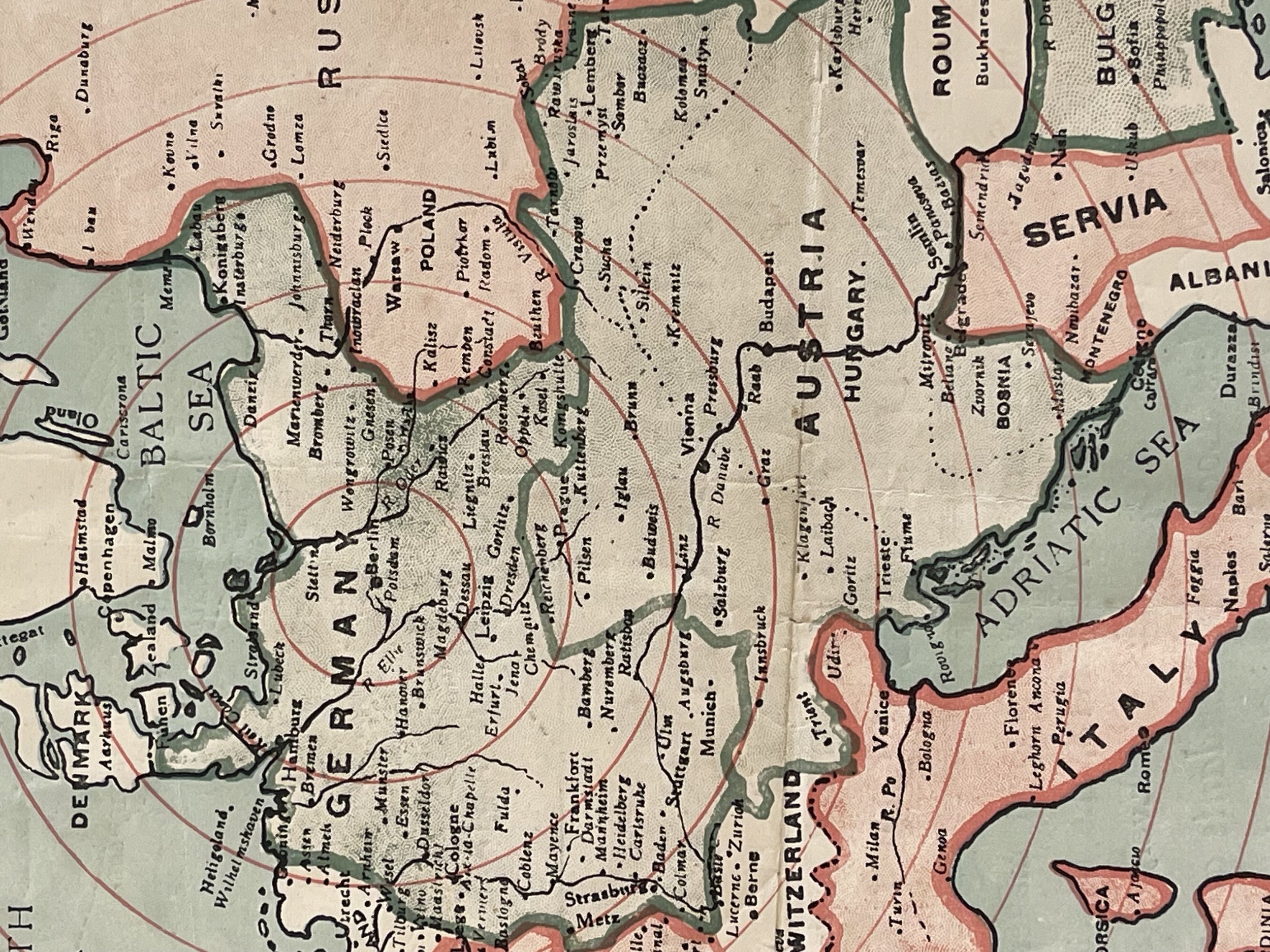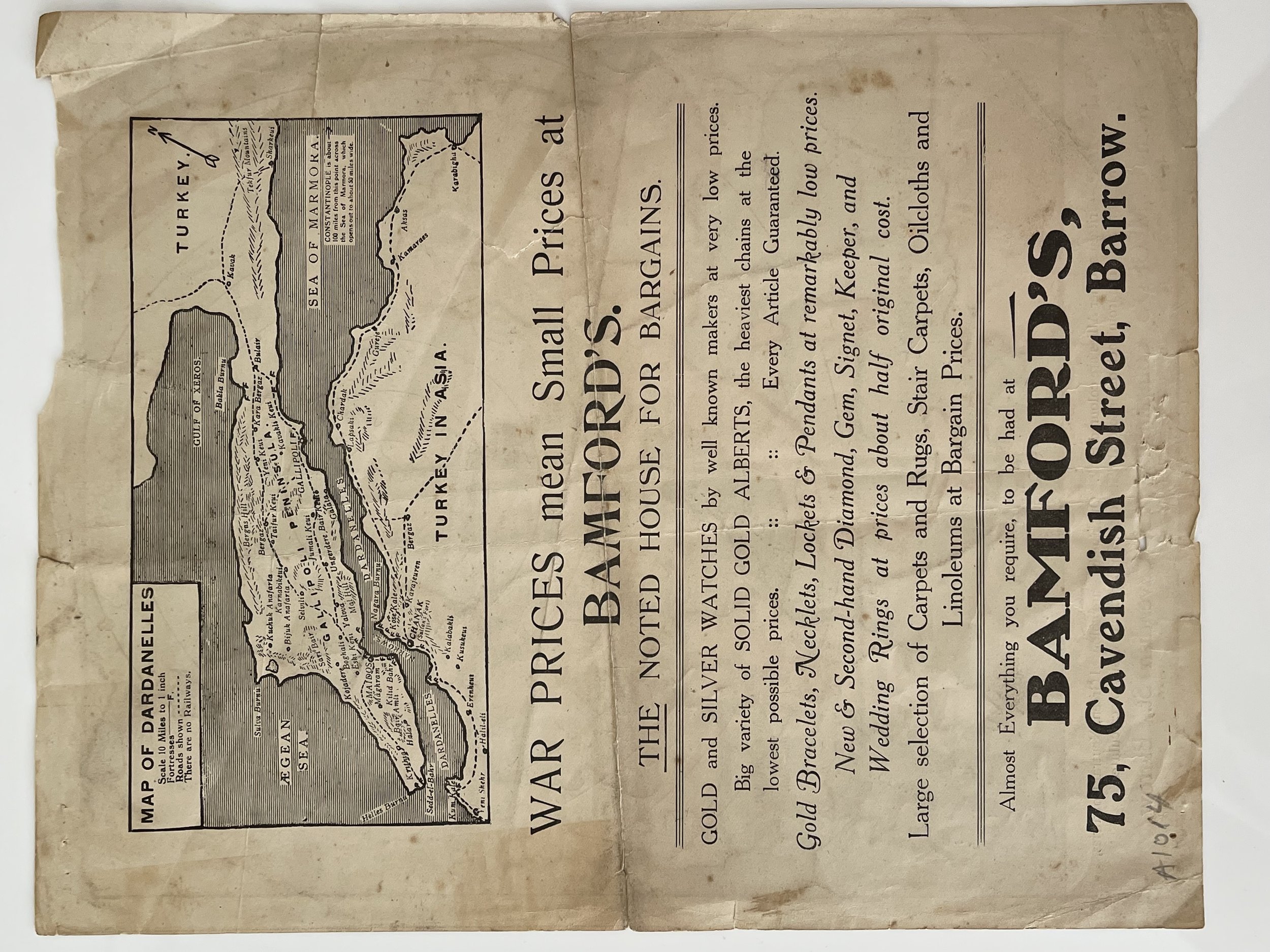WW1 Colour Map given FREE by Bamfords Store - c1915
WW1 Colour Map/ GIVEN FREE BY BAMFORD'S STORE / 75 CAVENDISH ST . BARROW c1915
A rare free handout by the store, Bamfords.
The history of Bamfords Ltd. Starts in 1871 with the founding of the company by Henry Bamford and his son, Samuel. The Bamford family originally came from Woodlane, near Hoar Cross, a village some 10 miles from Uttoxeter, where Henry’s father was a builder and joiner, with Henry moving to Uttoxeter about 1844 on his marriage to Julia Bressington of Uttoxeter, whose father, Samuel Bressington, a master cooper, owned many properties in the town.
In February 1845, Samuel Bressington acquired, for £495, premises in the Market Place and the Sheep Market for his son-in-law to start an ironmongery business. These premises are now the Uttoxeter Agricultural Company, a wholly owned subsidiary of Bamfords Ltd., carrying on business as ironmongers.
The business established by Henry Bamford and Samuel was growing but development was handicapped since all castings had to be bought, the major portion coming from Baldwins of Stourport, and so fortunately Samuel was able to convince his father of the need for a foundry.
The development area for this was in a coal wharf and siding bought from a certain Ralph Adams in 1868.
1913 was a proud year for the Bamfords with the award of the Royal warrant as agricultural engineers to His Majesty King George V. Since this date, the company has held the Royal Appointment to every monarch, including our present Queen. Things were to change in 1914 with the outbreak of the First World War.
The company joined the Birmingham Central Munitions Committee in June of this year and 4.5 inch shells were machined in the works. An interesting comment from the minute book of the day states “It was decided not to go past operation II (on the 4.5-inch shell) until we are in a position to do so without sacrificing summer work.” Priority must be given to the manufacture of agricultural machinery! A further contribution to the national effort was the casting of hand grenade bodies in the foundry.
In 1915 Captain Oswald Bamford, son of Samuel and was also one of the partners, was killed in the battle of Loos —— he had enlisted with the North Staffordshire Territorials at the outbreak of the war. Records show that the proposed manufacturing programme for 1915 — 1916 was 2,000 side rakes, 1,750 horse rakes, 1,300 haymakers and 1,500 swath turners. It is noted, however, that this programme had to be modified in view of the stocks of completed machines left over from the previous year, but these figures give some idea of the production volume during the war years.
A major step was taken in 1916 when the business of Henry Bamford & Sons was converted into a Private Limited Company. The nominal capital of the company was £120,000 with a paid-up capital of £90,066 in £1 shares. Mr. Edmund Dobbins, who joined the partners in 1902 as secretary, was appointed secretary of the new company and held his position until his retirement in 1954.
Seam tear in the middle on the left and right of the map that isn’t visible when flat. Pricing and grading commensurate. Lovely rare survivor of the period.
WW1 Colour Map/ GIVEN FREE BY BAMFORD'S STORE / 75 CAVENDISH ST . BARROW c1915
A rare free handout by the store, Bamfords.
The history of Bamfords Ltd. Starts in 1871 with the founding of the company by Henry Bamford and his son, Samuel. The Bamford family originally came from Woodlane, near Hoar Cross, a village some 10 miles from Uttoxeter, where Henry’s father was a builder and joiner, with Henry moving to Uttoxeter about 1844 on his marriage to Julia Bressington of Uttoxeter, whose father, Samuel Bressington, a master cooper, owned many properties in the town.
In February 1845, Samuel Bressington acquired, for £495, premises in the Market Place and the Sheep Market for his son-in-law to start an ironmongery business. These premises are now the Uttoxeter Agricultural Company, a wholly owned subsidiary of Bamfords Ltd., carrying on business as ironmongers.
The business established by Henry Bamford and Samuel was growing but development was handicapped since all castings had to be bought, the major portion coming from Baldwins of Stourport, and so fortunately Samuel was able to convince his father of the need for a foundry.
The development area for this was in a coal wharf and siding bought from a certain Ralph Adams in 1868.
1913 was a proud year for the Bamfords with the award of the Royal warrant as agricultural engineers to His Majesty King George V. Since this date, the company has held the Royal Appointment to every monarch, including our present Queen. Things were to change in 1914 with the outbreak of the First World War.
The company joined the Birmingham Central Munitions Committee in June of this year and 4.5 inch shells were machined in the works. An interesting comment from the minute book of the day states “It was decided not to go past operation II (on the 4.5-inch shell) until we are in a position to do so without sacrificing summer work.” Priority must be given to the manufacture of agricultural machinery! A further contribution to the national effort was the casting of hand grenade bodies in the foundry.
In 1915 Captain Oswald Bamford, son of Samuel and was also one of the partners, was killed in the battle of Loos —— he had enlisted with the North Staffordshire Territorials at the outbreak of the war. Records show that the proposed manufacturing programme for 1915 — 1916 was 2,000 side rakes, 1,750 horse rakes, 1,300 haymakers and 1,500 swath turners. It is noted, however, that this programme had to be modified in view of the stocks of completed machines left over from the previous year, but these figures give some idea of the production volume during the war years.
A major step was taken in 1916 when the business of Henry Bamford & Sons was converted into a Private Limited Company. The nominal capital of the company was £120,000 with a paid-up capital of £90,066 in £1 shares. Mr. Edmund Dobbins, who joined the partners in 1902 as secretary, was appointed secretary of the new company and held his position until his retirement in 1954.
Seam tear in the middle on the left and right of the map that isn’t visible when flat. Pricing and grading commensurate. Lovely rare survivor of the period.
WW1 Colour Map/ GIVEN FREE BY BAMFORD'S STORE / 75 CAVENDISH ST . BARROW c1915
A rare free handout by the store, Bamfords.
The history of Bamfords Ltd. Starts in 1871 with the founding of the company by Henry Bamford and his son, Samuel. The Bamford family originally came from Woodlane, near Hoar Cross, a village some 10 miles from Uttoxeter, where Henry’s father was a builder and joiner, with Henry moving to Uttoxeter about 1844 on his marriage to Julia Bressington of Uttoxeter, whose father, Samuel Bressington, a master cooper, owned many properties in the town.
In February 1845, Samuel Bressington acquired, for £495, premises in the Market Place and the Sheep Market for his son-in-law to start an ironmongery business. These premises are now the Uttoxeter Agricultural Company, a wholly owned subsidiary of Bamfords Ltd., carrying on business as ironmongers.
The business established by Henry Bamford and Samuel was growing but development was handicapped since all castings had to be bought, the major portion coming from Baldwins of Stourport, and so fortunately Samuel was able to convince his father of the need for a foundry.
The development area for this was in a coal wharf and siding bought from a certain Ralph Adams in 1868.
1913 was a proud year for the Bamfords with the award of the Royal warrant as agricultural engineers to His Majesty King George V. Since this date, the company has held the Royal Appointment to every monarch, including our present Queen. Things were to change in 1914 with the outbreak of the First World War.
The company joined the Birmingham Central Munitions Committee in June of this year and 4.5 inch shells were machined in the works. An interesting comment from the minute book of the day states “It was decided not to go past operation II (on the 4.5-inch shell) until we are in a position to do so without sacrificing summer work.” Priority must be given to the manufacture of agricultural machinery! A further contribution to the national effort was the casting of hand grenade bodies in the foundry.
In 1915 Captain Oswald Bamford, son of Samuel and was also one of the partners, was killed in the battle of Loos —— he had enlisted with the North Staffordshire Territorials at the outbreak of the war. Records show that the proposed manufacturing programme for 1915 — 1916 was 2,000 side rakes, 1,750 horse rakes, 1,300 haymakers and 1,500 swath turners. It is noted, however, that this programme had to be modified in view of the stocks of completed machines left over from the previous year, but these figures give some idea of the production volume during the war years.
A major step was taken in 1916 when the business of Henry Bamford & Sons was converted into a Private Limited Company. The nominal capital of the company was £120,000 with a paid-up capital of £90,066 in £1 shares. Mr. Edmund Dobbins, who joined the partners in 1902 as secretary, was appointed secretary of the new company and held his position until his retirement in 1954.
Seam tear in the middle on the left and right of the map that isn’t visible when flat. Pricing and grading commensurate. Lovely rare survivor of the period.
Code : A1014
Cartographer : Cartographer / Engraver / Publisher: Bamford’s Ltd
Date : Publication Place / Date - 1903
Size : Sheet size: Image Size: 22 x 28 cm
Availability : Available
Type - Genuine - Antique
Grading B+
Where Applicable - Folds as issued. Light box photo shows the folio leaf centre margin hinge ‘glue’, this is not visible otherwise.
Tracked postage, in casement. Please contact me for postal quotation outside of the UK.
